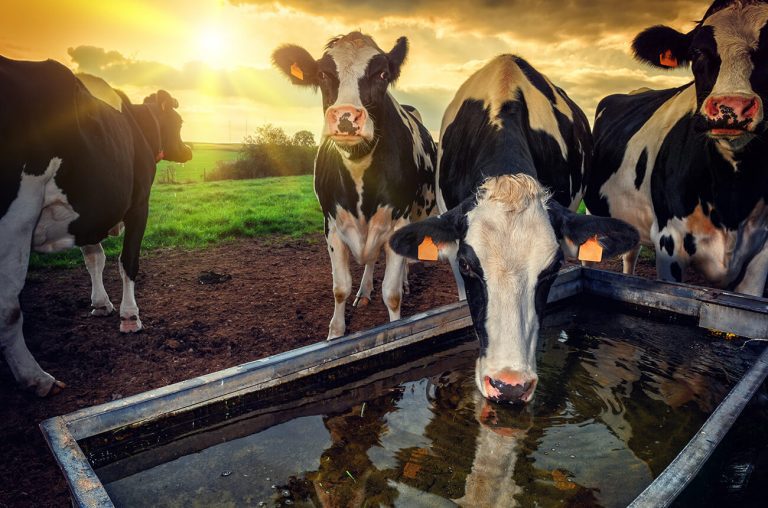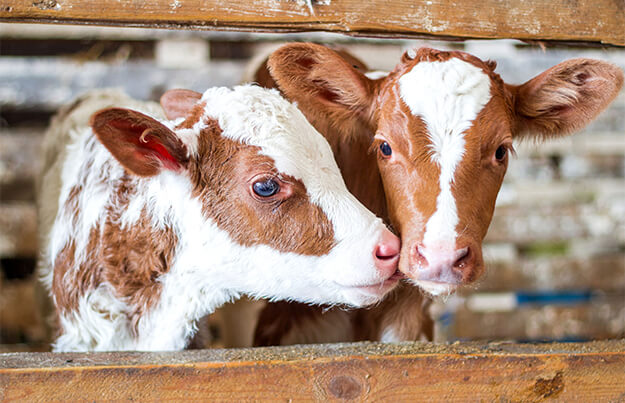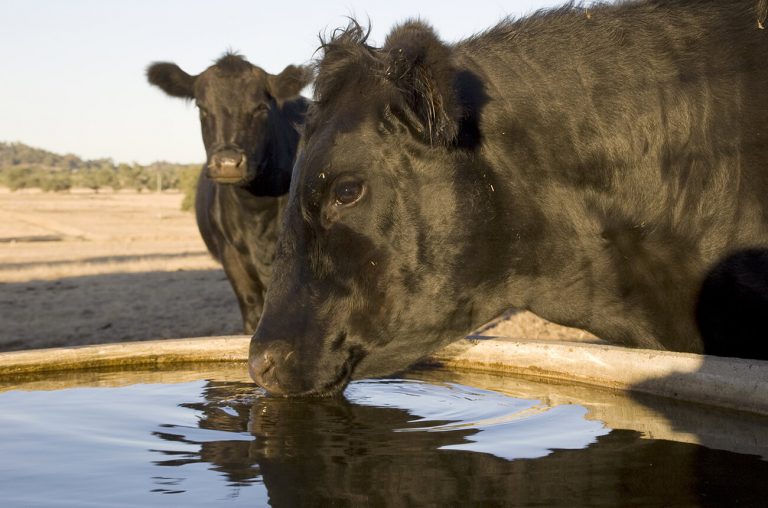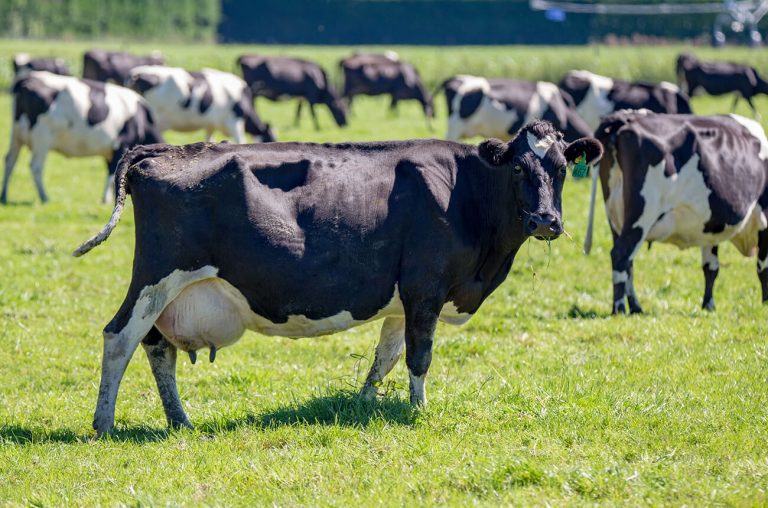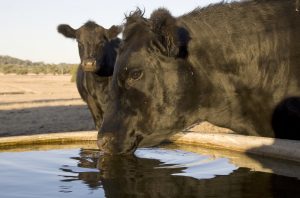It is now possible to virtually eliminate cow methane emissions by manipulating the type of water they drink and the feed they have access to.
Changing the environment of the Rumen, changes what can live there.
Research suggests that elevating the dissolved concentration of molecular hydrogen to 100µM (0.2 ppm) or more, will thermodynamically inhibit methanogenesis.
This suggests that an easy delivery mechanism would be for the animal to drink hydrogen (and oxygen) saturated water.
If cows were to drink Hydrogen nanobubble-infused water, it is expected that it should suppress all rumen methane production.
The technology will overwhelmingly reduce methane emissions and promote pathways that improve food absorption by the animal, increase immune system strength, as well as favouring other microbial metabolic pathways that will improve milk quality, and the overall biological integrity of the beast.
Methane (CH4) has more than 80 times the warming power of carbon dioxide over the first 20 years after it reaches the atmosphere. Since a cow can produce 400L to 500L of methane per day1 and global ruminant emissions represent 15-16%2,3 of total methane emissions, there is high-level interest in significantly decreasing that amount. Methane is a by-product of the cows’ ingested food fermentation process that takes place in their digestive system. It is a fermentation pathway that is energetically wasteful, and alternative pathways are more favourable. It is possible to decrease cow methane emissions by manipulating the type of feed they have access to or by providing food additives that are counter to methane production however, these approaches can be costly and/or impractical.
Research suggests that elevating the dissolved concentration of hydrogen up to 100µM (0.2ppm) or more will thermodynamically inhibit methanogenesis while favouring another pathway that produces compounds that can be assimilated by the animal4,5.
The Hydrogen saturation level in water between 20 and 40C is 1.6 to 1.4 ppm and is 7 to 8 times more than the upper estimate of hydrogen concentration that should inhibit methanogenesis in rumens. This suggests that an easy delivery mechanism would be for the animal to drink hydrogen saturated water.
Hydrogen Technologies have designed and developed a scalable nanobubble level gas infusion system that can saturate large volumes of water in a single pass while infusing the water with nanobubbles of the desired gas of choice. Introducing gasses to a biological environment at nanobubble scale means that the bio-available level of hydrogen can be far in excess of simple water saturation, which is already 7 or 8 times the upper limit of what is theoretically necessary to achieve this objective. In simpler words, if cows, for example, were to drink Hydrogen nanobubble-infused water it is predicted that it should suppress all methane production. It is also predicted that favouring other microbial metabolic pathways will improve milk quality.
Existing Technology
The existing Hydrogen Technologies systems are expected to significantly reduce the amount of methane emission while promoting a pathway that improves food absorption by the animal, increases immune system strength and increases the overall quality of the beast. It is interesting to note that adding oxygen to the water could also stop methanogenesis6, but it would be important to make sure that it has no unintended consequences, however, it is unlikely to pose a problem since drinking water is not anoxic anyway.
Bubbles in General
Everybody has seen gas bubbles rising in their glass of soda, bubbly or mineral water before popping at the surface. If you are lucky enough to own an aquarium, you also have seen the air bubble produced by your aerator rise to the top add pop there. While in the case of your soda, the gas contained in the sparkle is CO2, in your aquarium, the bubbles comprise the same mix of gas as the ambient atmosphere (approximatively 21% Oxygen, 78% nitrogen, with the last per cent being composed of CO2, neon and Hydrogen). In the case of soda, the CO2was dissolved under pressure in the soda, and when you opened the bottle, the pressure dropped, allowing the excess CO2to leave the solution and form gas bubbles. In the case of your aquarium, we are simply pushing air through a porous stone to create bubbles. Here we are trying to dissolve oxygen faster in the water to compensate for the oxygen used by the fish and other life-forms present in the tank. Note that we could achieve the same by increasing the surface area of the water exposed to the atmosphere. Indeed, if you think about it, each bubble we produce increases the surface area of contact between the air and the water enabling more gas exchange between air and water. Nonetheless, although we can speed up the process by increasing the surface area available for gas exchange, the maximum amount of oxygen we can dissolve in water at equilibrium is solely determined by the partial pressure of oxygen in the atmosphere and the temperature. The colder the water is, the more oxygen can dissolve in it at the same partial pressure.
Size of the Bubble
The same volume of gas in water can be made of one giant bubble or multiple smaller bubbles. The smaller the bubbles, the larger the number of bubbles you need for the same volume of gas, however, the smaller the bubbles, the larger the possible exchange area between water and gas. The larger the surface of exchange, the faster we can dissolve gas in water, and so the tiniest the bubble, the better.
Microbubbles
As their name tells us, microbubbles are very tiny, with a diameter in the micrometre range. That is, one micrometre is 1,000,000 smaller than a meter! For comparison, gas bubbles in your favourite glass of soda are around a millimetre, so microbubbles are a thousand times smaller again. They are so small that we just can see them with the naked eye and if the water contains a lot of them, it becomes so cloudy that it is very challenging to see anything through it. Although microbubbles are very small, they still rise to the surface of the water, pop, and dissipate. But because they are so small, the resulting increase in gas exchange with the water is astonishing. In consequence, dissolved gas concentration in the body of water treated, will reach saturation level extremely fast. However, rising bubbles mean that any gas that is not dissolved in water by the time the bubbles get to the surface is lost to the atmosphere.
Nanobubbles
Nanobubbles are up to one thousand times smaller than microbubbles. Until recently, nanobubbles were believed not to exist based on theoretical reasoning. However, practically they are very real and display very exciting properties. First of all, they do not rise to the surface of the water and pop. Second, they are negatively electrically charged, which means that they repel each other, thus never merging to form larger bubbles. Third, they are stable in water for a very long time and are bio-available. Therefore, the amount of oxygen or gas of interest stored in the body of water is far more substantial than the saturation level. Finally, because they are again smaller than microbubbles, the potential surface area for gas exchange is greater again.
Each of the Hydrogen Technologies patented nano-bubble generators produce different proportions of microbubbles and/or nanobubbles. The type of generator to select depends on the application. Our systems provide you with on-demand high saturation of water with both Oxygen and Hydrogen, enabling life to thrive, virtually anywhere.
Changing the environment, changes what can live there, whether it is in the rumen, or not.
References:
- Chaucheyras-Durand, F., Masséglia, S., Fonty, G. & Forano, E. Influence of the composition of the cellulolytic flora on the development of hydrogenotrophic microorganisms, hydrogen utilization, and methane production in the rumens of gnotobiotically reared lambs. Applied and environmental microbiology 76, 7931-7937 (2010). 10.1128/AEM.01784-10
- Mitsumori, M. & Sun, W. Control of rumen microbial fermentation for mitigating methane emissions from the rumen. Asian-Australasian Journal of Animal Sciences 21, 144-154 (2008). 10.5713/ajas.2008.r01
- Tseten, T., Sanjorjo, R. A., Kwon, M. & Kim, S.-W. Strategies to Mitigate Enteric Methane Emissions from Ruminant Animals. Journal of Microbiology and Biotechnology 32, 269-277 (2022). 10.4014/jmb.2202.02019
- Ungerfeld, E. M. Metabolic hydrogen flows in rumen fermentation: principles and possibilities of interventions. Frontiers in Microbiology 589 (2020). 10.3389/fmicb.2020.00589
- Janssen, P. H. Influence of hydrogen on rumen methane formation and fermentation balances through microbial growth kinetics and fermentation thermodynamics. Animal Feed Science and Technology 160, 1-22 (2010). 10.1016/j.anifeedsci.2010.07.002
- Scott, R. I. et al. The presence of oxygen in rumen liquor and its effects on methanogenesis. Journal of Applied Bacteriology 55, 143-149 (1983). 10.1111/j.1365-2672.1983.tb02658.x


